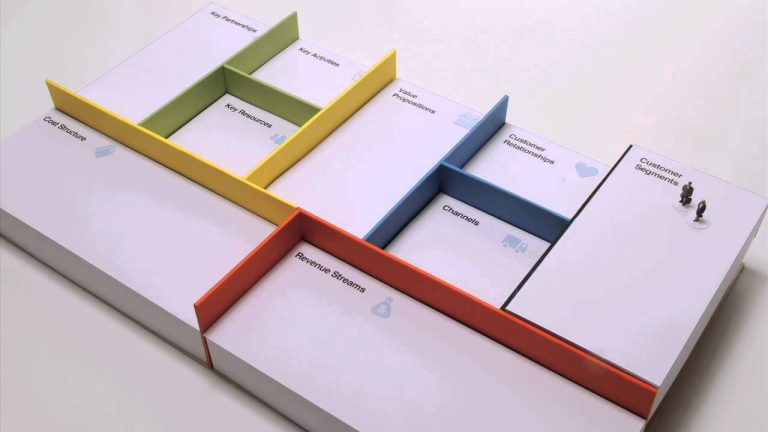Contenidos
The business model canvas
value proposition canvas
Have you heard about the business model canvas, the canvas model or the canvas methodology but you don’t know how to use it? Do you want to know the tool that will allow you to work on your business model in a practical, interactive and simple way? Do you want to know examples of the canvas model?
This is your post!!! because I have prepared a video where I explain in detail, block by block each of the 9 blocks that make up the business model canvas. In addition, I have prepared two examples of application so you can put it into practice from the first moment.
I have recorded this video where I explain in detail what the business model canvas is, how to use it for a specific project and I also show you 2 examples of application for two different businesses.
It is divided into nine modules, the right part is the one that refers to the external aspects of the company, the market, the environment. The right side of the business model canvas is composed of the following blocks: market segment, value proposition, channels, customer relationship and revenue sources;
canvas word model
It has always been said that capturing things visually helps us to clarify things and understand them better. The business model canvas summarizes, on a single sheet of paper, the key aspects of your company. Can you imagine being able to see at a glance all the parts that shape and influence your business?
The business model canvas is a fundamental tool in the development of any company. It helps you to know your business and its key aspects, something necessary before making any important decision or starting any marketing strategy.
The Business Model Canvas makes it easier, as it tells us what questions to ask ourselves about the 9 key elements that we have to analyze individually in order to get an overview of our current business.
We have to take into account the synergies we can count on with our partners: Who are our main partners? What do they do? And above all, what can we achieve with them?
business model canvas pdf
Have you heard about the business model canvas, the canvas model or the canvas methodology but you don’t know how to use it? Do you want to know the tool that will allow you to work on your business model in a practical, interactive and simple way? Do you want to know examples of the canvas model?
This is your post!!! because I have prepared a video where I explain in detail, block by block each of the 9 blocks that make up the business model canvas. In addition, I have prepared two examples of application so you can put it into practice from the first moment.
I have recorded this video where I explain in detail what the business model canvas is, how to use it for a specific project and I also show you 2 examples of application for two different businesses.
It is divided into nine modules, the right part is the one that refers to the external aspects of the company, the market, the environment. The right side of the business model canvas is composed of the following blocks: market segment, value proposition, channels, customer relationship and revenue sources;
business model generation pdf
Business Model Canvas, translated as business model canvas, is a strategic management template for developing new business models or documenting existing ones. It is a visual graphic with elements that describe product or value propositions of the company, infrastructure, customers and finances. It helps companies align their activities by illustrating potential trade-offs.
The canvas business model was initially proposed by Alexander Osterwalder[1] based on his earlier work on the ontology of business models. Since the publication of Osterwalder’s work in 2009, new canvases for specific niches have appeared, such as the Lean Canvas.
1. – Key activities: these are the most important tasks in the execution of a company’s value proposition. An example would be the creation of an efficient supply chain to reduce costs.
2. – Key resources: these are the means necessary to create value for the customer. They are considered an asset for a company, which needs them to sustain and support the business. These resources could be human, financial, physical and intellectual.

